Rep. Evan Goyke’s Fixer-Upper
3,571-square-foot, 14-room, 1894 home requires constant fixing.
When this 3,571-square-foot home was built in 1894 for Emil Claussen, a manufacturer of tables, there were still eight empty lots among the 25 of this very large block. It runs between W. State St. and W. Highland Blvd. from N. 27th to N. 29th streets, dispensing altogether with N. 28th St., which does not reappear until W. Juneau Ave. A half-block to the south was a remnant of the old Milwaukee and Watertown Plank Road, begun in 1848, completed in 1853 and rendered obsolete with the completion of a railroad to the same destination in 1855. By 1910 the old road was known as Dunbar St., and today it is a crooked little two-block lane called W. Richardson Pl.
Time has wrought other changes to the Concordia neighborhood, and the vacant lots in the area are the sites of former homes like this one, now lost. Fortunately, many remain of these near-mansions, and they provide the owner-occupants of the neighborhood plentiful opportunities to spend every moment of their free time working to keep them up.
According to the Historic Concordia Neighborhood Tour Guide of 2015, “Their first task was to shovel snow — out of the kitchen! The back door had rotted and snow drifts had piled up inside. Since then they’ve replaced some plumbing and electrical, and of course fixed the back door!”
Goyke’s been up on the ladder painting at least one exterior wall, which gives the house a bit of an uneven look, as he tears off the old asphalt and paints the siding.
Goyke, an attorney and former Public Defender, represents the Concordia neighborhood in the 18th Assembly District, where the Democrat has served since his election in 2012.
He grew up in Madison where his father Gary Goyke was a State Senator. Evan came to Milwaukee to get his law degree at Marquette, and by the time he graduated in 2009, he decided life in the city was for him, and set about to find himself a home that would serve as a political base.
From Mansion to Rooming House and Back
By the 1950s the grand homes of the West Side were a drag on the market, as families moved to more outlying areas. This was a predominantly German upper-middle-class area at its prime, and later became largely African-American. Many of the homes, including this one, were subdivided into rooming houses. This home had 10 rooms, each with its own gas range and doorbell. The tenants shared the single full bath, and also had access to two half-baths, one of them in the basement.
In 1977 Charles Rubnitz bought it for $14,000, selling it two years later for $24,000 to Harriot Denzen. By 1985, the rooming house license lapsed, and the then-owner of the home lived on the first floor, with tenants above. In 1989 it was advertised for sale at $61,900. “Cash flow like water. It just won’t stop,” the advertisement read.”Use for frat house or group home.”
One reason the cash flowed like water was that it was not reinvested into things like keeping the water from flowing through a leaky roof. By 2000, the home had been reconverted into a single-family, its destiny as frat house or group home unfulfilled. In 2006 it was bought at the height of the real estate bubble, when this place was assessed at $217,300, more than double the current assessment of $104,600. The house was lost, like so many others here, to foreclosure in 2009. Goyke bought the place for $82,500 on March 3rd, 2011.
It appears today that cash flows out the old windows (and there must be a good 30 of them) in the form of heating bills during the winter. Goyke and Leija have tried to mitigate this by covering the interior of the windows with plastic — just one more chore to tend to. If they want to keep the film up all summer, who is to judge?
The Home Today
On a sunny day with the promise of spring in the air, the home turns a bright face to the street. Here the siding is painted white, with restrained elements of blood-red trim. The facade has a delightful variation, with part of it stepped back, while a bold porch set on three columns projects toward the street with a balcony above. Higher still, on the third floor, an arched inset provides another little outdoor nook. The steps are carpeted in the same blood red color, and a bicycle was unmolested, chained to the porch rails. Campaign signs from November await a reuse.
A tulip poplar blooms in the yard and colorful tulips, recently popped from the earth, were already in flower, a week or more before their East Side counterparts. From the sides and rear, the home presents a different visage. Here, the blood red asphalt siding remains, awaiting its turn for attention. The home is built right to the west lot line, which would not be permitted today, but is not a particularly big deal since the neighboring property has a plenty big lot, and that house there is set far enough away to afford space and air for both.
The rear of the home is a revelation in itself, since it is serviced by a 30-foot-wide brick alley of considerable vintage. Few of these remain, and this one is a dandy. We have streets that aren’t 30 feet wide.
In May of 1911, H. E. Briggs, the Commissioner of Public Works, took a look at the area behind the house and was alarmed. “It is inadequate, inconvenient and unsafe for the public use thereof, for the passage of foot passengers and vehicles and for the drainage of water therefrom.”
Commissioner Briggs pointed his finger squarely at the property owners for this dire state of affairs. “The property owners have negligently failed to make said alley in a safe and suitable condition for public use,” he decreed, declaring that he “deems it necessary to grade and pave with brick, the alley.”
Today, 106 years later, the alley remains in rather fine condition, except in those places where it was torn up and replaced with concrete.
But the alley has been a troubled spot of late, it seems. On January 5th 2017, while still basking in the glow of his inaugural festivities two days before, Goyke received an order from the city to correct a “Garbage Violation” at his home. Was the overworked legislator behind in taking out the trash? Or maybe that was Gabriela’s job. A search of the documents seemed in order. Thorough reportage demanded it.
“Debris/Litter:Scattered. ALLEY-SCATT TRASH,” the report read. It wasn’t Goyke’s garbage, but it piled up against his garage and fence in the cruel winter wind. Even so, he went outside and cleaned the mess to the inspector’s satisfaction. The nuisance was officially abated.
Photo Gallery
The Rundown
- Owner: Evan Goyke, Representative to the Assembly
- Location: City of Milwaukee
- Neighborhood: Concordia
- Subdivision: Dousman
- Year Built: 1894
- Architect: Crane & Barkhausen
- Style: Front Gabled
- Size: 3571 sq.ft. of finished living area. Lot size: 50.00 X 165.00
- Fireplaces: 0
- Bedrooms: 7
- Bathrooms: 1 full, 2 powder rooms
- Rec Room: No
- Assessment: Land: 8,250 sq. feet lot is valued at $104,600 ($12.68/sq. ft.). Improvements: $100,400. Total assessed valuation: $104,600.
- Taxes: $2,784.70. Paid in full.
- Garbage Collection Route and Schedule: Blue Schedule, CP4-3A, next pickup date Tuesday
- Polling Location: Milwaukee Academy of Chinese Language, 2430 W. Wisconsin Ave.
- Aldermanic District: 4th Robert Bauman
- County Supervisor District: District 10 Supervisor Supreme Moore Omokunde
- Walk Score: 73 out of 100. City Average: 61.
- Transit Score: 56 out of 100. City average: 49.
How Milwaukee Is It? 2 miles from east of Milwaukee City Hall.
The Rundown was researched by Gabrielle Barriere.
Political Contributions Tracker
Displaying political contributions between people mentioned in this story. Learn more.
- December 26, 2019 - Robert Bauman received $150 from Gary Goyke
- May 25, 2016 - Robert Bauman received $250 from Gary Goyke
House Confidential Database
| Name | City | Assessment | Walk Score | Year |
|---|---|---|---|---|
| Name | City | Assessment | Walk Score | Year |


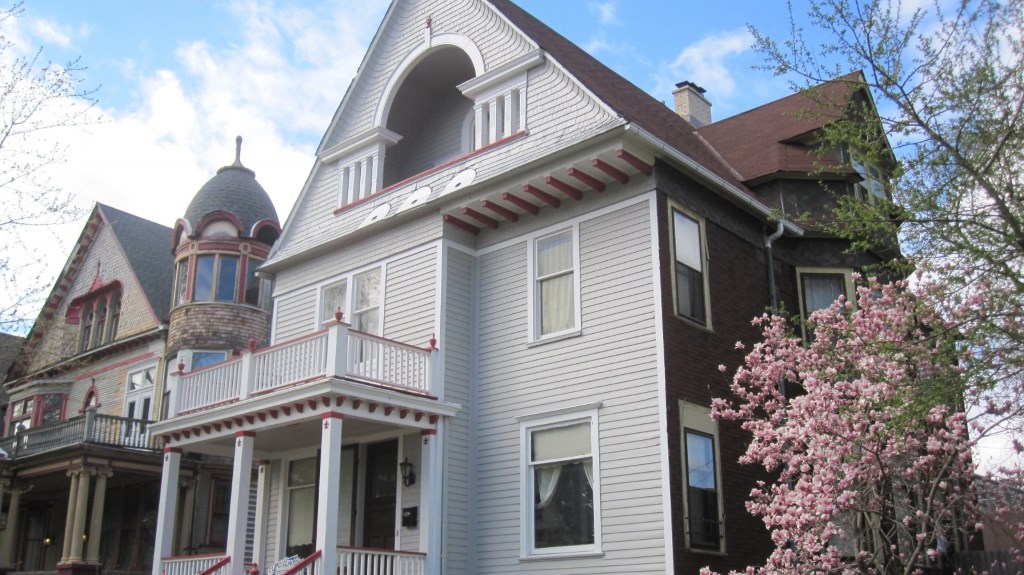
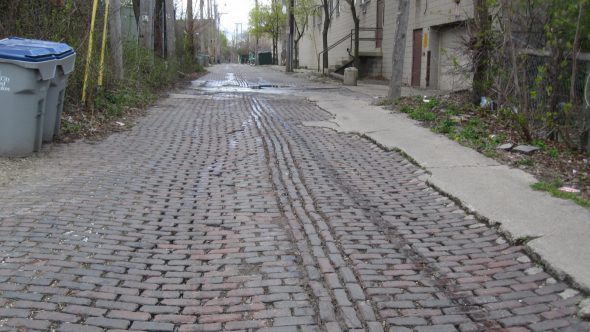
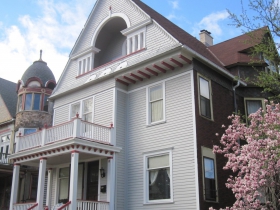
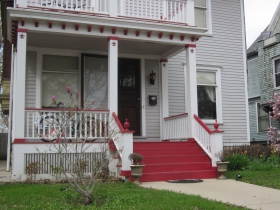
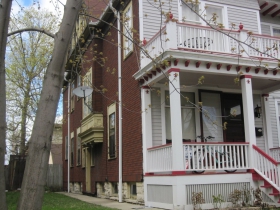
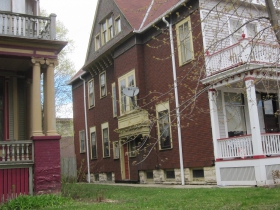
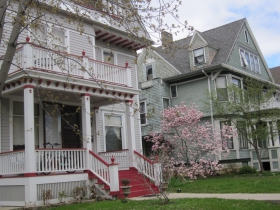
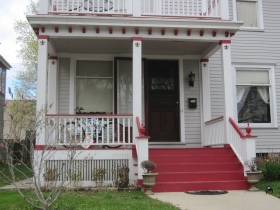














Oh wow! That was my parents home from like 2001-2005. I lived there then, they did most of the renovation. I have interior shots from back then! let me know if you have questions.
That isnt a “tulip poplar” it is Magnolia soulangiana.
Enjoyed reading this. Keep up the work.
Am so proud of you for the work you are doing for your family and us.